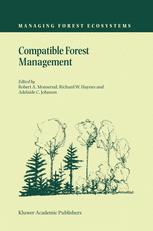

Most ebook files are in PDF format, so you can easily read them using various software such as Foxit Reader or directly on the Google Chrome browser.
Some ebook files are released by publishers in other formats such as .awz, .mobi, .epub, .fb2, etc. You may need to install specific software to read these formats on mobile/PC, such as Calibre.
Please read the tutorial at this link: https://ebookbell.com/faq
We offer FREE conversion to the popular formats you request; however, this may take some time. Therefore, right after payment, please email us, and we will try to provide the service as quickly as possible.
For some exceptional file formats or broken links (if any), please refrain from opening any disputes. Instead, email us first, and we will try to assist within a maximum of 6 hours.
EbookBell Team

4.7
76 reviewsPublic debate has stimulated interest in finding greater compatibility among forest management regimes. The debate has often portrayed management choices as tradeoffs between biophysical and socioeconomic components of ecosystems. Here we focus on specific management strategies and emphasize broad goals such as biodiversity, wood production and habitat conservation while maintaining other values from forestlands desired by the public. We examine the following proposition: Commodity production (timber, nontimber forest products)and the other forest values (biodiversity, fish and wildlife habitat)can be simultaneously produced from the same area in a sociallyacceptable manner. Based on recent research in the Pacific Northwest, we show there are alternatives for managing forest ecosystems that avoid the divisive arena of 'either-or' choices. Much of the work discussed in this book addresses two aspects of the compatibility issue. First, how are various forest management practices related to an array of associated goods and services? Second, how do different approaches to forest management affect relatively large and complex ecosystems?